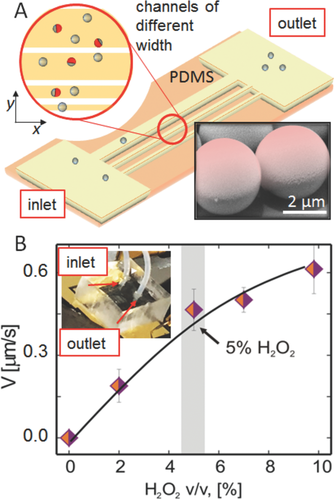Self-propelled Janus particles, acting as microscopic vehicles, have the potential to perform complex tasks on a microscopic scale, suitable, e.g., for environmental applications, on-chip chemical information processing, or in vivo drug delivery. Development of these smart nanodevices requires a better understanding of how synthetic swimmers move in crowded and confined environments that mimic actual biosystems, e.g., network of blood vessels. Here, the dynamics of self-propelled Janus particles interacting with catalytically passive silica beads in a narrow channel is studied both experimentally and through numerical simulations. Upon varying the area density of the silica beads and the width of the channel, active transport reveals a number of intriguing properties, which range from distinct bulk and boundary-free diffusivity at low densities, to directional "locking" and channel "unclogging" at higher densities, whereby a Janus swimmer is capable of transporting large clusters of passive particles.

Self-propelled Janus particles, acting as microscopic vehicles, have the potential to perform complex tasks on a microscopic scale, suitable, e.g., for environmental applications, on-chip chemical information processing, or in vivo drug delivery. Development of these smart nanodevices requires a better understanding of how synthetic swimmers move in crowded and confined environments that mimic actual biosystems, e.g., network of blood vessels. Here, the dynamics of self-propelled Janus particles interacting with catalytically passive silica beads in a narrow channel is studied both experimentally and through numerical simulations. Upon varying the area density of the silica beads and the width of the channel, active transport reveals a number of intriguing properties, which range from distinct bulk and boundary-free diffusivity at low densities, to directional "locking" and channel "unclogging" at higher densities, whereby a Janus swimmer is capable of transporting large clusters of passive particles.
